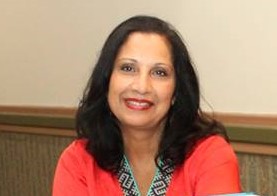As my Facebook friends know, I write about my daily life, which is good for a blog, but not for a book unless I consider my life a live book! For now, that is okay….
This weekend, I had an incredible experience of a silent retreat in the beautiful mountains of upstate New York. My friend and health coach Salpi had been talking about going for a while and had picked yesterday. Of course, another event was happening that was seducing me to cancel- a picnic catered by Dera of Spring Valley (my favorite) organized by FUSION Muslim Community Center and of course, my hubby Shahid who orchestrated all the games etc. But I stuck to my commitment for the Silent Meditation Retreat and am so glad for it. Dharma Drum Retreat Center (dharmadrumretreat.org) – founded by a Chinese Buddhist master- is set in a beautiful valley in Pine Bush New York. The buildings are simple and stylish, and reminded me of East Asia and its focus on simplicity, presentation, etiquette and humility. It used to be a YMCA, and some of the old structures are preserved but outfitted to be a Retreat Center. There were rules for how to enter the meditation room, how to sit, how to meditate, how to eat, how to clean up. We did sitting mediations, moving meditations, walking meditations (both inside and outside) and at the end of the day it felt like the mind, body and soul had been cleansed.
Imagine not speaking a single word for 8 hours- yes, that’s what I did. When I told Shahid he didn’t believe me, as he thinks I talk too much! Thank God I have Salpi as a witness. Imagine not looking at my cellphone or taking pictures of the beautiful surroundings (which has become a nasty habit) for the whole day, even as the sunshine shone through the forest as we walked; the light danced on the lakes and rivers and golden leaves gently glided to the earth to join their buddies and give us a nice crunchy cushion to walk on. As I looked at the beauty, I absorbed it rather than getting pictures of it for others to enjoy later- a very different experience.
The silent sitting mediations were the hardest, even though we could add cushions or towels as we needed. By the time we did the last one in the afternoon, my knees were screaming in pain. But our wise master, a beautiful lank Buddhist monk with a heavy Chinese accent but a deliberate, deep voice that made his commands understandable and motivating, would remind us to focus on the breath, and even when we felt any pain, to refocus on the breath. Our normal tendency is to go off on our “wandering thoughts” as he called it. We say to ourselves, “oh this hurts so much, and now I won’t be able to walk or go to gym, and it will get worse”, etc etc. So, we were gently guided to let go of our wandering thoughts by constantly going back to the present moment and focusing on the breath. “Think of the cold air coming in, and the hot air going out of your nose- just focus on that” he said. He guided us to tie up the past and the future in a big bundle and put it aside from our minds. His guidance has stuck with me, even our mindfulness when eating. He said “When we chew food, it is big pieces that we chew down to small pieces; then we produce saliva and swallow it; mind that process and feel its blessings. Such great guidance!
My takeaway from this beautiful experience was that:
- All faiths are paths to the same Creator of the Universe and the various messengers were all blessed with beautiful gifts and teachings that they passed on to us (e.g. Buddha in this case).
- Silence teaches us to observe our thoughts, observe our bodies and learn mindfulness, gratitude, discipline, respect to name a few virtues. We can strengthen our mind and learn to let go of our wandering thoughts (or incessant internal chatter) by focusing on our breath and the present. We stop worrying about the future and stay in the present, and we let go of our past. We become better vessels that appreciate all that is around us at this very moment: people, nature, food, all the blessings, just as it says in Sura Rahman of the Quran.
- And finally, as a senior, we all have new aches and pains. Silent meditation can teach us to acknowledge the pain, but not associate thoughts with that pain (such as if this pain increases, I will be in trouble), and move through it with grace. Taking away the story of pain reduces it somehow, and has us able to do many more things.
Thank you Salpi for this wonderful experience, and let’s do this again!

Be First to Comment